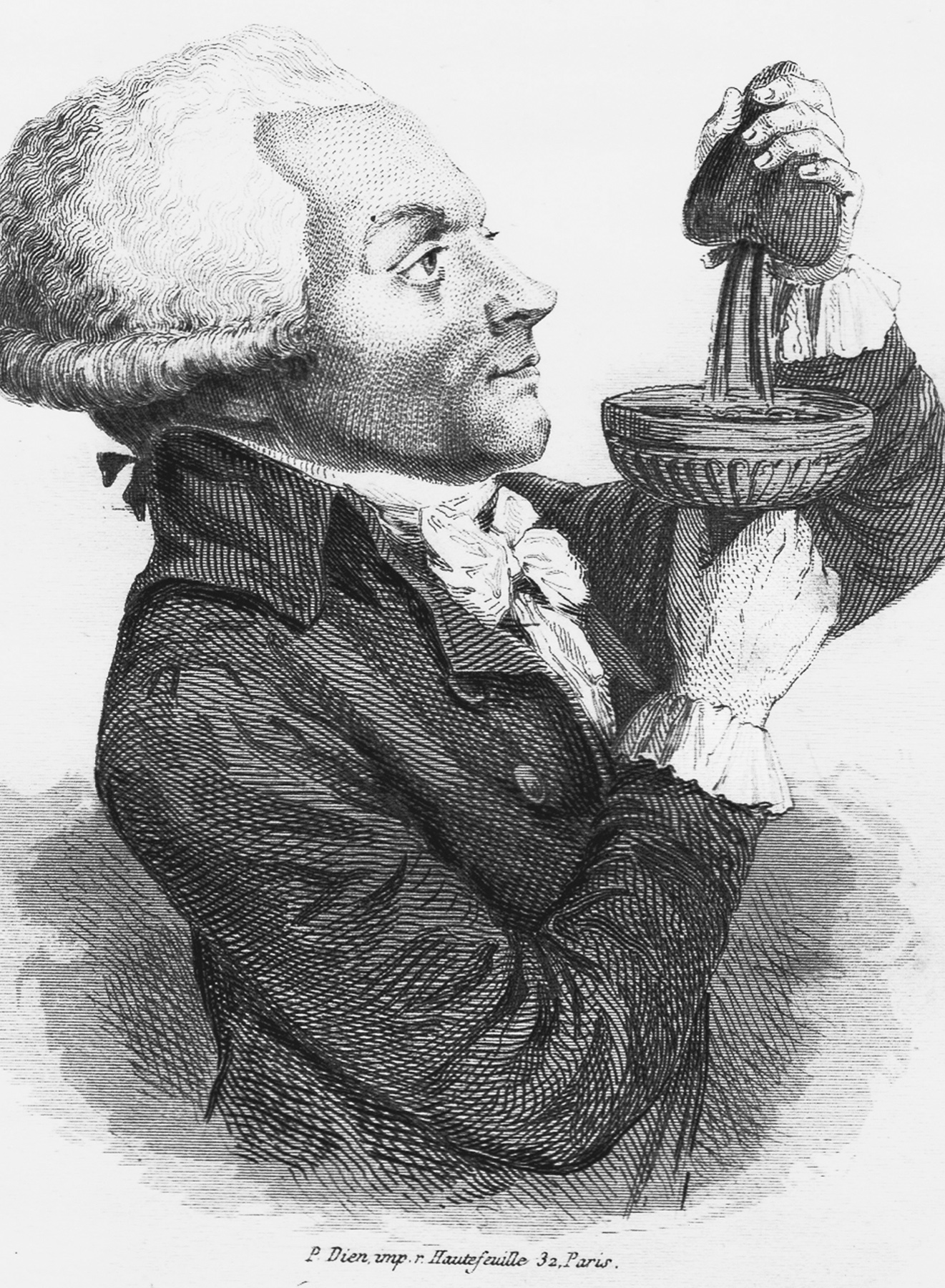Near Fredericksburg, Virginia. May 1975. 4 p.m. 18°C. The floor–to–ceiling shutters of the antebellum mansion, folded back, trap every breath of air off the slow–flowing Rappahannock and channel them across the porch, where we sit sweating and sipping bourbon. On the walls, decoratively fanned under glass, are millions in worthless Confederacy “grayback” dollars. “Gone with the wind?” I joke. Not funny, apparently.
MOST REVOLUTIONS, IN THE RUSH TO “MAKE IT NEW,” BEGIN WITH the easy stuff: a new flag, a new anthem, new faces on the currency. The French adopted the blue, white, and red tricolor, embraced the Marseillaise, and in 1794 replaced the livre and louis d’or (gold louis) with the franc, streamlined in accordance with the Revolution’s most successful innovation, decimalization.
The revolution’s achievements were remarkable. It’s been called the most important single event of the modern era. For the first time in history, ordinary people seized control of their lives and their society. They overhauled the legal and educational systems, created academies of science and arts, began the process of eradicating slavery, decriminalized prostitution and homosexuality, and paved the way for full suffrage.
They also established the first scientifically based system of weights and measures, introducing the kilogram and replacing the yard and foot (the latter supposedly based on the length of the foot of Hercules) with the meter, corresponding to a proportion of the circumference of the earth.
Reformers everywhere welcomed the events of 1789. The British poet William Wordsworth could barely contain himself:
Bliss was it in that dawn to be alive,
But to be young was very heaven!—Oh! times,
In which the meager, stale, forbidding ways
Of custom, law, and statute, took at once
The attraction of a country in romance!
The euphoria didn’t last. By the time he published that poem in 1809, it bore the rueful title “The French Revolution as It Appeared to Enthusiasts at Its Commencement.” Nobody had foreseen the factional fighting that would end with the mass murder of France’s intellectual elite and large parts of the privileged classes, including the royal family.
Charles Dickens, writing half a century later in A Tale of Two Cities, articulated a general ambivalence about the revolution:
It was the best of times, it was the worst of times, it was the age of wisdom, it was the age of foolishness, it was the epoch of belief, it was the epoch of incredulity, it was the season of Light, it was the season of Darkness, it was the spring of hope, it was the winter of despair, we had everything before us, we had nothing before us, we were all going direct to Heaven, we were all going direct the other way.
For good or ill, France exported its revolution to the world. The American Civil War and the Russian Revolution, which hailed Robespierre as a pioneer Bolshevik, both existed in its shadow. Because of its gory conclusion, however, modern France plays it down. The anniversary of the storming of the Bastille remains the national day, the tricolor its flag, and the Marseillaise its anthem. Until it was replaced by the euro, the franc remained its currency; most of the revolution’s advances in science, law, and education survived as well. But like the 1940 surrender to Germany and subsequent occupation, the episode itself is one France prefers to forget.
The Bastille exists today only as an outline embedded in the paving of a busy traffic roundabout and a few stones in the metro station below. There are no individual markers for the thousands of the guillotined buried in such quiet places as the gardens of a convent in Picpus, where they are guarded by the spirit of the Marquis de Lafayette, interred nearby. An exaggeratedly heroic statue of Georges Danton stands at the foot of our street, rue de l’Odéon, marking the former home of the man who was first a friend of Maximilien de Robespierre, then his victim; but it’s the exception. Unless you count a suburban metro station, Robespierre has no monument. “Of all the names of the Terror,” said one historian, “no other has remained so execrable in the public memory.”

In a contemporary caricature, Robespierre drinks blood squeezed from human hearts.
Dien, P. (engraver). Robespierre Squeezes Blood from Human Hearts. Author’s collection.
Another furtive survival of that time lies just a few steps across the boulevard from Danton’s statue, in a cobbled alley called Cour du Commerce Saint–André. A plaque marks the former home of Tobias Schmidt, a manufacturer of harpsichords who found fortune and dubious fame as the designer and manufacturer of the guillotine. Set high on the outside wall of a restaurant, the plaque is virtually unreadable, presumably not by accident.
Even Napoléon Bonaparte, who rebuilt the shattered nation, isn’t as popular as one might expect. No hit musical celebrates his achievements, and the tourists queuing at his grandiloquent tomb behind the Hôtel des Invalides are far outnumbered by the thousands who line up in all weather to descend into the boneyard known as the Catacombs.
Paradoxically, it’s the Bourbon kings whom tourists find most seductive. They see in their vulgarity the Kardashians writ large. By the busload, tourists flood the palace of Versailles and its grounds, even more so since the current president took to using it as a stage for meetings with foreign heads of state. Since Charles de Gaulle, French presidents have carried themselves less like civil servants than like kings. Even now, in some quiet corner of France’s presidential palace, the Élysée, a flunky may be dusting off a throne as the tailor runs up some twenty–first–century imperial robes.